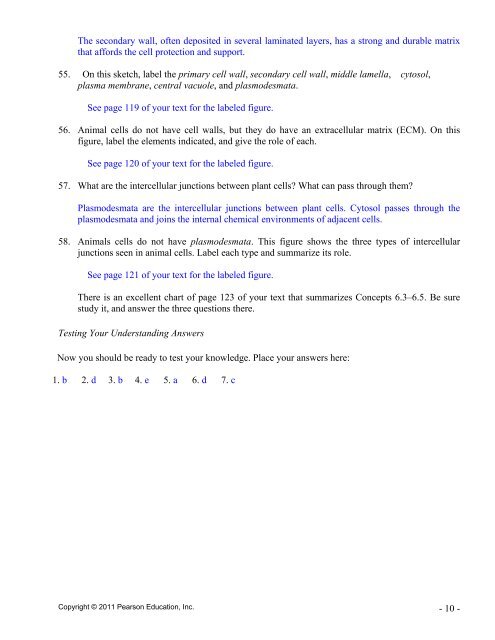You also want an ePaper? Increase the reach of your titles
YUMPU automatically turns print PDFs into web optimized ePapers that Google loves.
The secondary wall, often deposited in several laminated layers, has a strong and durable matrix<br />
that affords the cell protection and support.<br />
55. On this sketch, label the primary cell wall, secondary cell wall, middle lamella, cytosol,<br />
plasma membrane, central vacuole, and plasmodesmata.<br />
See page 119 of your text for the labeled figure.<br />
56. Animal cells do not have cell walls, but they do have an extracellular matrix (ECM). On this<br />
figure, label the elements indicated, and give the role of each.<br />
See page 120 of your text for the labeled figure.<br />
57. What are the intercellular junctions between plant cells? What can pass through them?<br />
Plasmodesmata are the intercellular junctions between plant cells. Cytosol passes through the<br />
plasmodesmata and joins the internal chemical environments of adjacent cells.<br />
58. Animals cells do not have plasmodesmata. This figure shows the three types of intercellular<br />
junctions seen in animal cells. Label each type and summarize its role.<br />
See page 121 of your text for the labeled figure.<br />
There is an excellent chart of page 123 of your text that summarizes Concepts 6.3–6.5. Be sure<br />
study it, and answer the three questions there.<br />
Testing Your Understanding Answers<br />
Now you should be ready to test your knowledge. Place your <strong>answers</strong> here:<br />
1. b 2. d 3. b 4. e 5. a 6. d 7. c<br />
Copyright © 2011 Pearson Education, Inc. - 10 -


